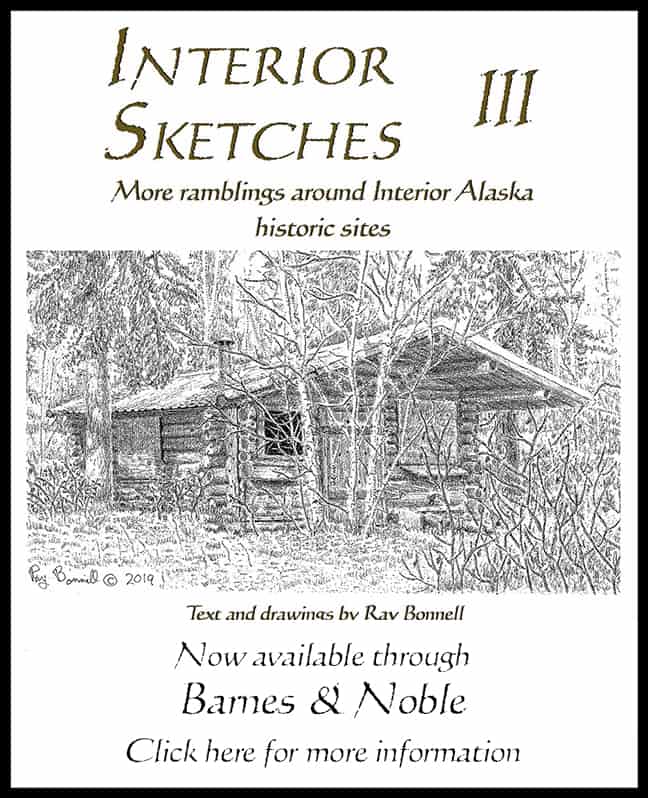The Northern Mines Region of California was my stomping ground as a youth. The area was dotted with abandoned mines, hydraulic diggings and coyote holes. Small hamlets lay scattered throughout the hills, but much of the country was wild. I grew up appreciating the wildness, but also fascinated by the history of the area and the aesthetics of decay as the works of man gradually merged back into nature.

Old horse barn in Livengood, 70 miles north of Fairbanks – 6″ x 9″
While attending Alaska Methodist University and taking studio art classes from Bill Kimura, I studied the Japanese wabi-sabi aesthetic that stresses the beauty of the “imperfect, impermanent and incomplete,” and this resonated with my interest in the aesthetics of decay and transience.
I use Pigma Micron pens (.15 mm tip) and Arches 140# hot-pressed watercolor paper for most of my art. The choice of monochromatic pen-&-ink as a working medium is partly due to my being partially color blind. I also enjoy the challenge of translating the myriad shadings and visual cues of a colored world into monochromatic images.
I have been influenced by black and white photography (particularly early photographers such as Edward Weston and Ansel Adams), printmaking (Francisco Goya, Kathy Kollwitz, Rockwell Kent & others), and Japanese sumi-e painting (Kubota Beisin, 1852-1906, expressed the wish to give up color entirely and, “use sumi-e [black pigment] alone for all effects in painting”).
When I first began seriously investing time in drawing with pen and ink I used smooth bristol board, and pens with larger nibs (.25 mm to .45 mm). I also produced larger-size drawings than I do now.

Fairbanks Creek blacksmith shop – 7″ x 5″
As my style has changed I have moved to exclusively using small-nibbed pens (.15 mm), and the size of my drawings has shrunk. Many of the drawings I do now are only 5″ x 7″ in size. In comparing my early drawings to ones I do now, I think I pack as many lines into my current small drawings as I used to put in my earlier large drawings.
I have also moved to heavy-weight Arches hot-pressed watercolor paper. The hot-pressed paper is fairly smooth but has a slight bit of tooth to it. The Pigma Micron pens I use are fiber-tipped, and if I angle my pen to about 30° or less I can lay a light discontinuous line down on the top of just the paper’s tooth. This allows me, through hatching and cross-hatching, to develop very fine gradations of gray.
Since the ink is lying just on top of the tooth, as long as I haven’t built up the ink layer too much, I can also erase at least some of the ink. In this way I can either lighten up an area, or selectively “erase” in details such as tree trunks in a darkened forest background.


